ENGLISH-FON-GNM UNIT-3-PART-PART-6- CARE OF TERMINALLY ILL AND DYING-UPLOAD
CARE OF TERMINALLY ILL AND DYING PATIENT:
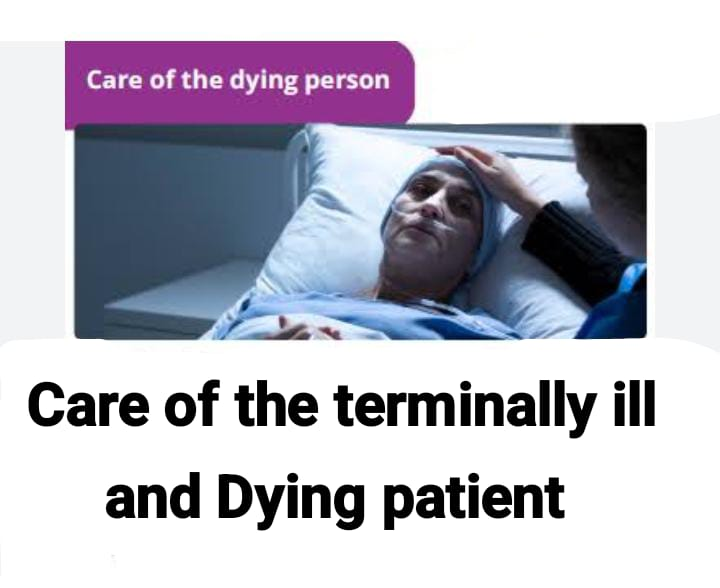
- Key terms:
- Loss
- The experience that a person feels when they are separated from their loved one or close one is called loss.
- Embalming
- It is the procedure of sanitizing and preserving the human body. or The art and science of preserving human or animal remains and treating them (with chemicals to prevent decomposition) is called embalming.
- Grief
- Grief is a painful, physiological and psychological response or deep sorrow experienced when a loved one is lost. (Sadness).
- Euthenesia
- Euthenesia means voluntary death. It is a deliberate action to end someone’s life. Or mercy killing, easy or painless death.
- Autopsy
- Autopsy is a medical procedure in which a postmortem examination of a dead body is performed to identify the cause of death.
- Mourning (Mourning)
- Mourning means mourning. To feel or express sorrow or regret for death or the loss of something.
- Hospice care
- Hospice care is a treatment provided to a patient who has been ill for a long time and has been receiving treatment in a hospital for a long time. In such a situation, the patient is allowed to stay at home with his family members and friends in a comfortable environment. In hospice care, a home-like environment is created around the patient. Or hospice care is palliative and supportive care provided directly to the terminally ill patient and his family. Or provided on a consultation basis.
- Hypostasis
- Dark red or bluish discoloration of the skin due to stagnation of blood.
- Cheating Agent
- They are chemical compounds whose structures are similar to those of two or more of their donors. Allows atoms to bond together with a single metal ion and produce more rings.
- Aggressive
- Showing unprovoked attacks, hostile, violent behavior.
- Artifacts
- Something observed in a scientific investigation or experiment.
Write down introduction of death
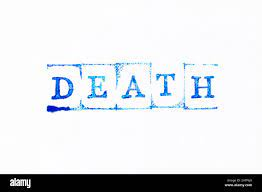
• Death is the irreversible cessation of all vital functions or the permanent stoppage of cardiorespiratory and brain functions.
• Death means that a person is no longer alive, the end of life.
• Death is considered to have occurred when the patient’s respiration and heart stop functioning for a few minutes.
• Usually, breathing stops first; the heart stops beating a few minutes later.
• The absence of brain wave activity measured by an electroencephalogram is commonly used to confirm death.
• However, death is a biological process that is accompanied by a range of social, emotional, and spiritual experiences for the deceased and their survivors.
• Some may see death as a punishment for past wrongdoings, others may see it as a loss of self and self-identity and a missed opportunity for future goals, opportunities, joy, and relationships.
• No two people will face death the same way because all human beings are different.
Write down causes of death (रित डॉन कोस ओफ देथ)

- When people consider death, one question that is often asked is “What actually caused the patient to die?” When death is not sudden, the actual cause is often cancer-related. This is because Cancer is the second leading cause of death after cardiovascular problems. The most common causes of death includeinfection, organ failure, hemorrhage, and cardiac arrest.
Write down types of death

Brain death:
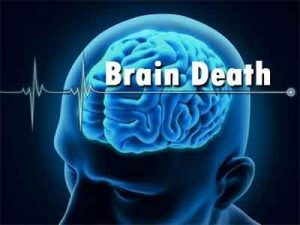
- Permanent cessation of brain and brain stem functions.
Natural death:
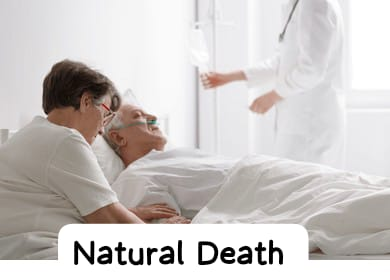
- In cases of disease, death occurs through a natural process.
Suicide:

- Death by Self Injury.
Homicide:

- The death was caused by someone else’s action.
Accidental death:

- Death caused by an accident such as fire, natural calamities such as earthquake or flood, electric shock and road accidents is called accidental death.
Circulatory Death:
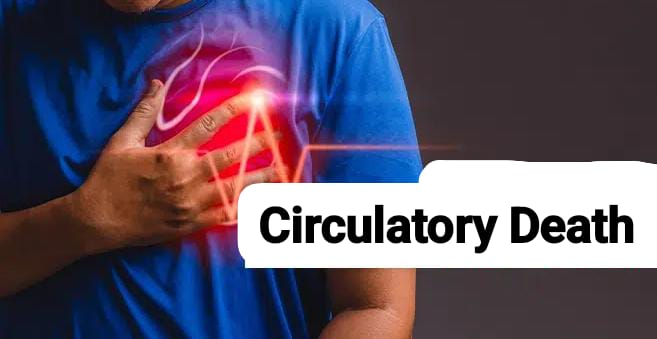
- When the heart stops functioning irreversibly and circulation and oxygenation to the tissues come to an irreversible halt. This is called circulatory death.
Undetermined Death :
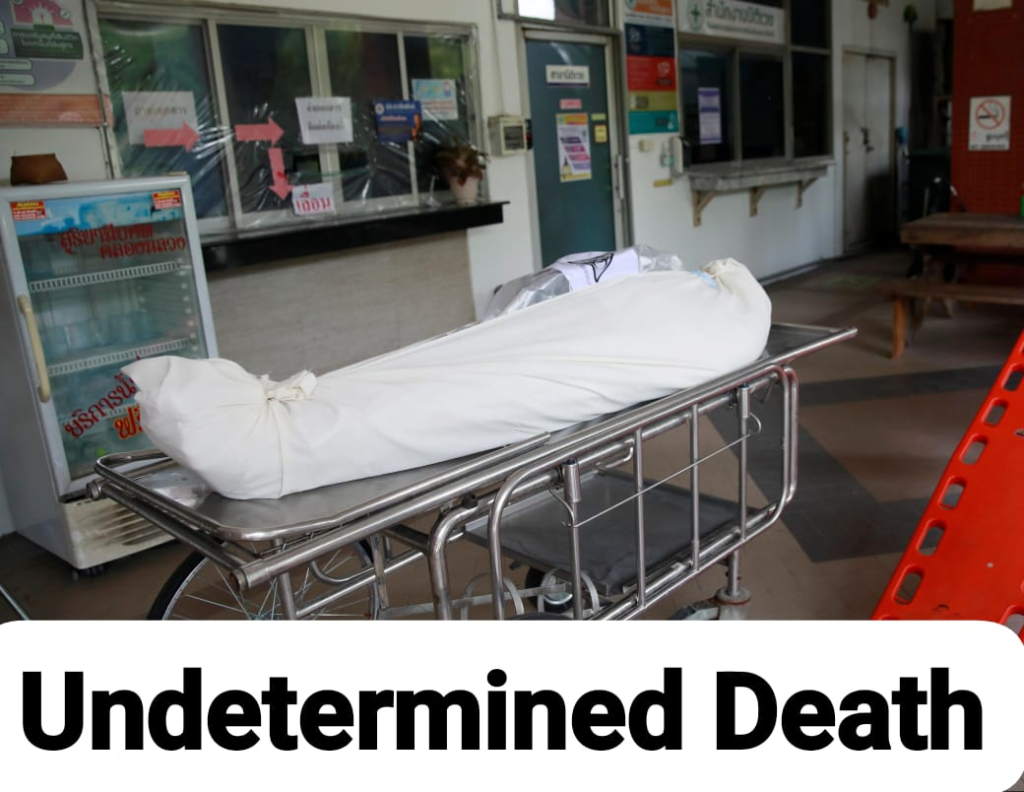
- There is no clear information about death, it is called undetermined death.
Write down signs of impending death

- Facial appearance:
- Facial muscles relax. Moving in and out with each breath, the cheeks become flaccid. Facial structure changes. Dentures cannot be worn. Removing dentures can cause the mouth structure to collapse. Muscle tone and anemia cause “facies hippocratica” with prominent cheeks and chin, pinched sharp nose, pale ashen skin, and sunken glazed eyes. The sides of the nose are drawn in with each inspiration.
- Changes in sight, speech, and hearing:
- Sight gradually fails. The pupils fail to react to light. The eyes become sunken and half-closed, and a film appears on the eyes. Speech becomes increasingly difficult, confusing, unintelligent, and finally impossible. Hearing is retained for a long time.
- Changes in Respiratory System:
- Breathing becomes irregular, chain-stock type of respiration, rapid and slow, or very slow, and stertorous (with low pitch) due to the presence of secretions.
- Circulatory System: System) :
- Circulatory system changes cause changes in temperature, pulse, and respiration. The radial pulse gradually fails; once it stops, the apical pulse may continue for a short time. Usually, pulsation is observed even after the patient stops breathing.
- Gastrointestinal System:
- Hiccups, nausea, vomiting, and abdominal distension are seen. The gag reflex disappears; the patient feels an inability to swallow.
- Genitourinary system:
- Urinary retention, bladder distension, urinary and stool incontinence, loss of sphincter control.
- Skin and Musculoskeletal System:
- The skin may become pale, cold, and sweat profusely. The ears and nose are cold to the touch; Circulatory failure results in the skin becoming pale and mottled due to congestion of blood in the veins.
- Central Nervous System:
- Reflux and pain are gradually lost. The patient may be restless due to lack of oxygen and increase in body temperature despite the body surface being cold.
Write down symptoms of physical death (right) down symptoms of physical death)
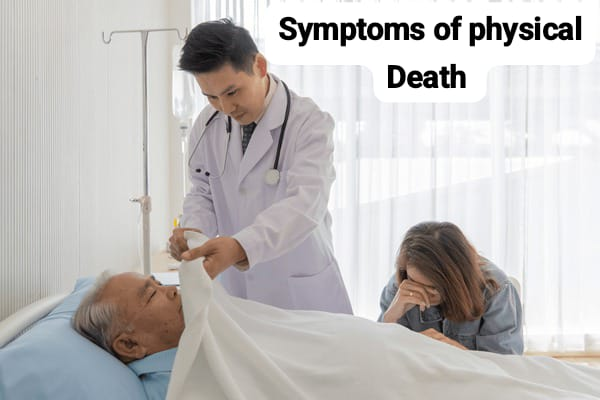
• Weak thready pulse.
• Decreased blood pressure.
• Labored respiration which may include Cheyne-Stokes (periods of apnea, followed by periods of excessive breathing).
• Cyanosis of the extremities, nail beds, and areas around the lips.
• Diminished sense
• Death rattle (patient may A rattling sound heard in the throat due to secretions that cannot be coughed up.
• Cold extremities (due to decreased circulation)
• Possible coma.
• Mottled appearance (purplish color of the skin due to decreased circulation).
• Possible decrease in body temperature.
• Pulse, Possible cessation of respiration and blood pressure.
Write down clinical signs of death
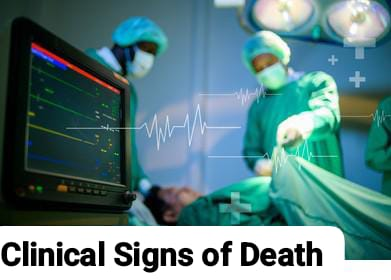
- At the time of death, the power of motion as well as reflexes is lost first from the legs and then gradually from the arms.
- A. Absence of pulse, heart rate, respiration.
- B. RBCs form Rouleaux in the retinal vessels.
- C. The pupils of the eye become fixed and unresponsive to light. Peripheral circulation fails to work, causing the body to become cold and clammy. Pupils stop accelerating. Pupils become dilated and fixed. Respiration stops. Heart stops working. Brain waves are absent.
Write down physiological changes after death
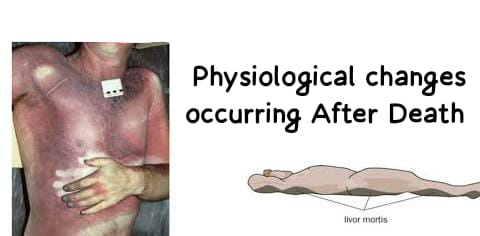
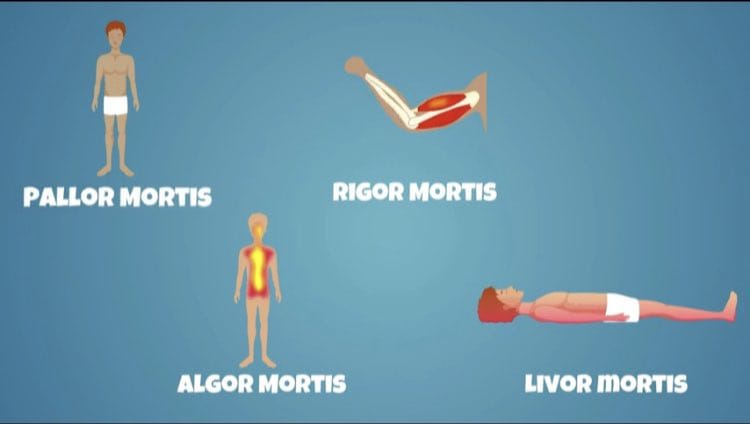
- Rigor mortis
- Stiffening of the body is the stiffening of the body about 2-4 hours after death. It is caused by the lack of adenosine triphosphate which is not synthesized due to the lack of glycogen in the body. ATP is required for the relaxation of muscle fibers. Its deficiency causes the muscles to contract which in turn immobilizes the joints. It starts with the involuntary muscles (heart, bladder etc.) and then progresses to the neck, head and trunk and finally reaches the extremities. It leaves the body about 96 hours after death.
- Algor mortis
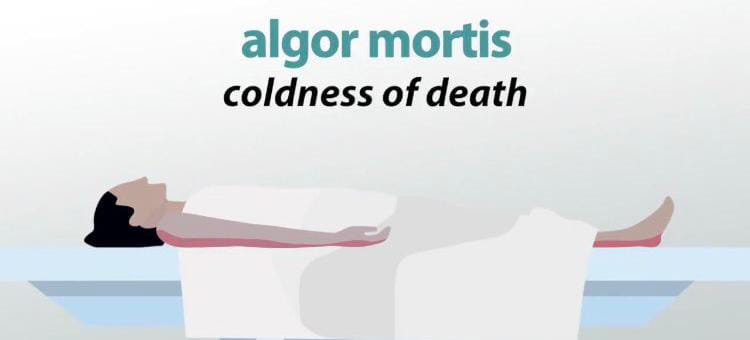
- After death, the body’s temperature gradually decreases. When blood circulation terminates and the hypothalamus stops working, the body’s temperature drops by about 1°C per hour until it reaches room temperature. At the same time, the skin loses its elasticity and can break easily when removing dressings and adhesive tape.
- Livor mortis
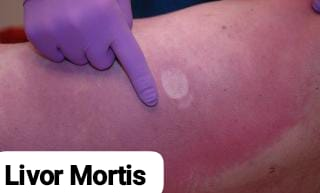
- After blood circulation stops, red blood cells (RBCs) break down and release hemoglobin, which discolors the surrounding tissues. This discoloration is called livid mortis and is seen in the lowest/dependent areas of the body.
- Autolysis
- It is the process of hydrolysis of tissue. After death, tissues become soft and evenly liquefied by bacterial fermentation. The warmer the temperature, the faster the change. Therefore, bodies are often stored in a cool place to delay this process. Embalming prevents the process by injecting chemicals into the body to kill bacteria.
Write down stages of death
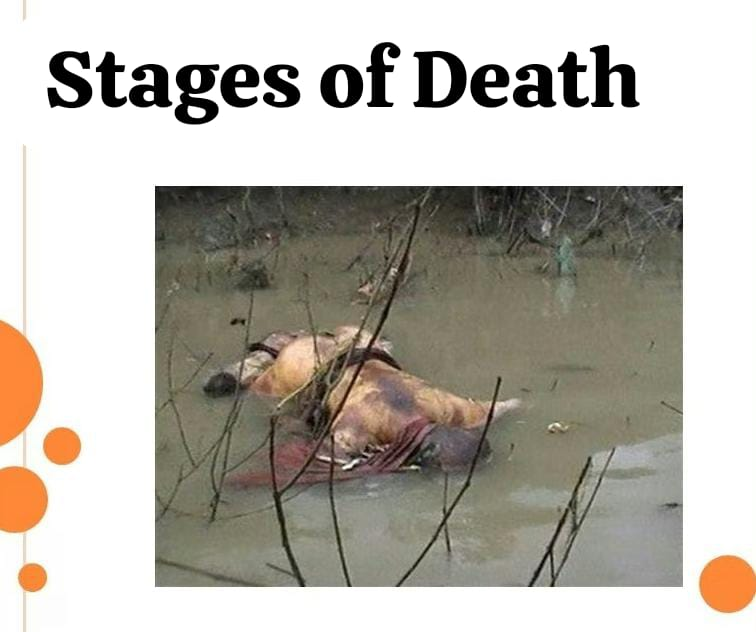
1) Pallor mortis
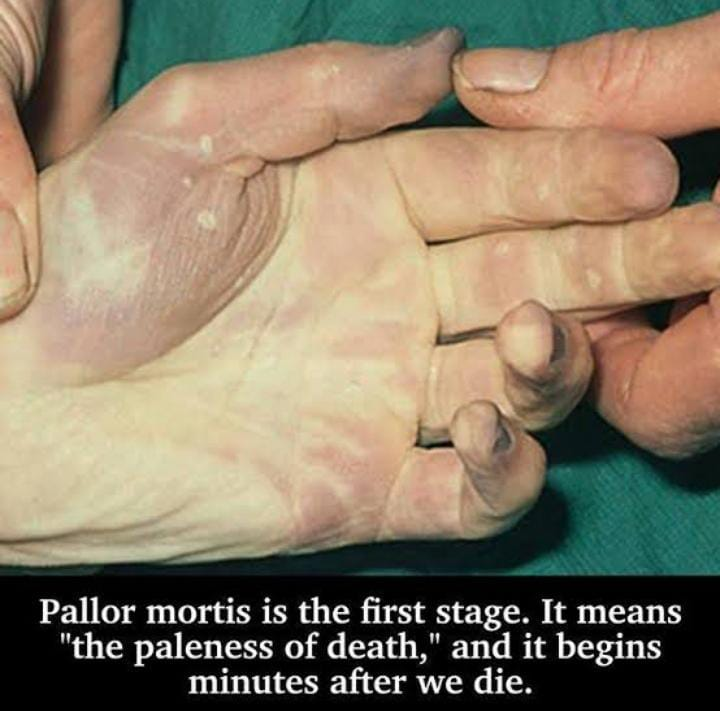
- Postmortem pallor occurs 15-20 minutes after death.
2) Algor mortis
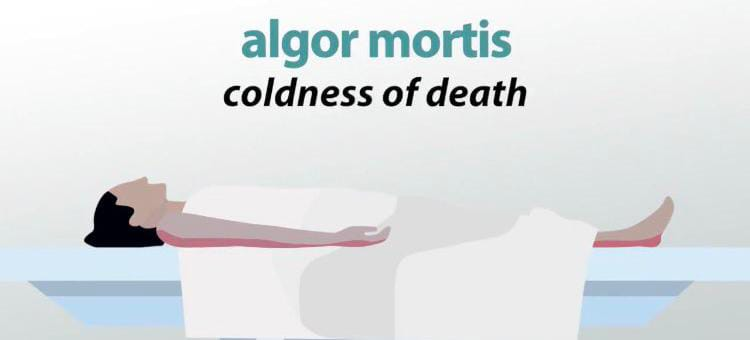
- The word ‘algor’ means coldness and ‘mortis’ means death. Algor mortis means the reduction in body temperature after death.
3) Rigor mortis
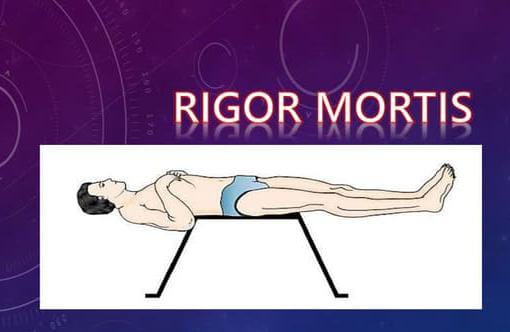
- Rigor Mortis i.e. Stiffness. Which starts 3-4 hours after death. Maximum body stiffness occurs after 12 hours.
4) Livor Mortis
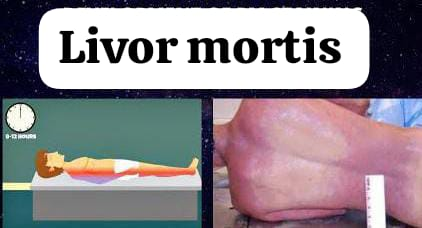
- Latin for bluish color. It refers to postmortem lividity in which blood settles in the lower part of the body, resulting in the formation of bruises.
5) Purification
- Refers to the decomposition of proteins. It is the breakdown of tissues and liquefaction of organs.
6) Decomposition
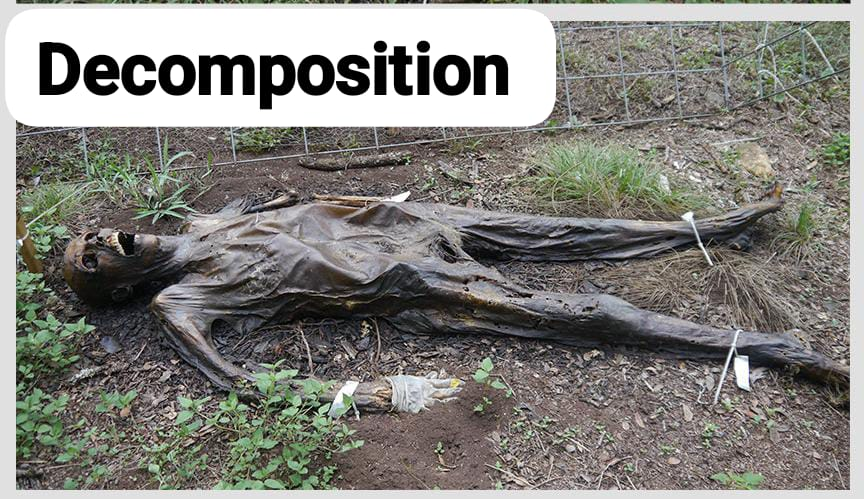
- Decomposition means decomposition. Organisms break down into simpler forms of matter.
7) Skeletonization
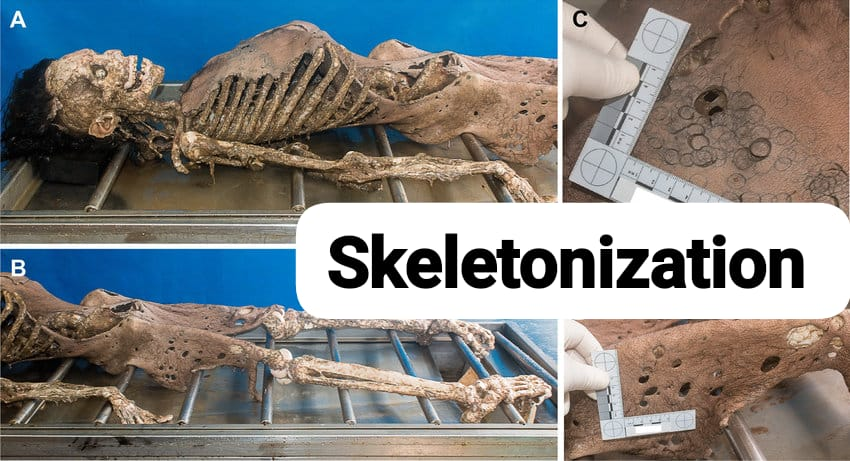
- This is the final stage of decomposition where the carcass (skeletons) decays/drys to the point of exposure.
Needs of Dying patient
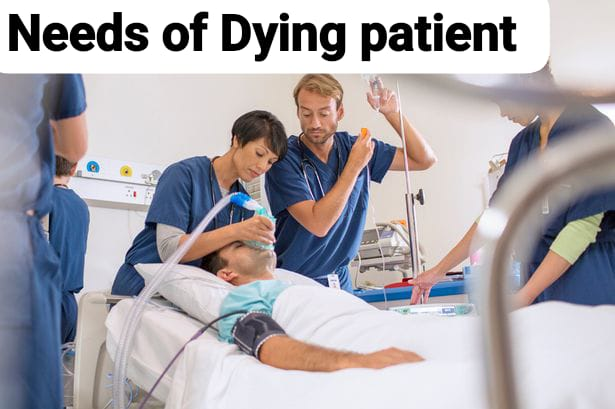
The patient’s needs are met by considering the following aspects:
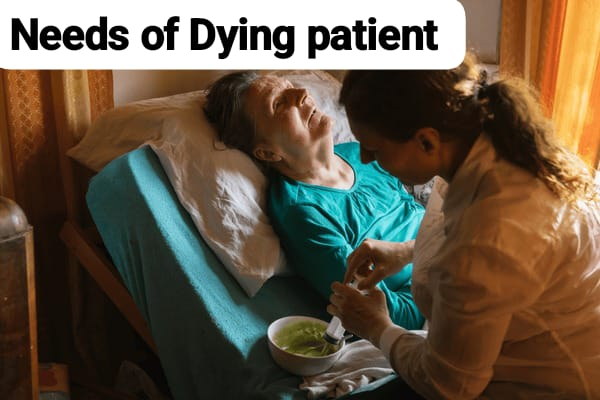
- Physiological needs:
- These include meeting physical needs such as personal hygiene, pain control, nutritional and fluid needs, movement and elimination. Personal hygiene includes the cleanliness of the skin, hair, mouth, nose, eyes and perineum. Administer prescribed analgesic medication for pain control as per patient’s need to relieve patient discomfort and symptomatic management.
- Problems Associated with Breathing:
- The dying person may be apprehensive and have difficulty breathing, and oxygen may be administered to reduce the discomfort. Elevating the patient’s head and shoulders may help with breathing. Keep the room well ventilated and avoid crowds. Periodic suctioning and repositioning of the conscious patient in a semi-Fowler’s position can be done.
- Problems Associated with Eating and Drinking:
- Anorexia, nausea, and vomiting are commonly seen in dying people. They are unable to eat any food and are unable to keep food down if they do eat. Most of them may require tube feeding or intravenous fluids to meet their nutritional needs. If they can tolerate oral fluids, sips of liquid with a spoon can be given to keep the mouth moist. Provide frequent oral hygiene. Apply emollients to dry lips. Dentures are removed and placed safely.
- Problems Associated with Elimination:
- The patient may have elimination-related problems such as incontinence, constipation, or urinary retention. Absorbent pads can be used for incontinent patients and catheterization may be required to maintain urine flow. Laxatives or enemas can be used to relieve constipation.
- Problems Associated with Immobility:
- Frequently changing the patient’s position in bed to reduce pressure on pressure points. Skincare should be given to pressure points with special attention to prevent pressure sores. An air mattress or alpha bed can be provided and bed linen should be changed frequently.
- Problem Associated with Sense Organs:
- If the patient has visual problems before providing any care to the patient, the nurse should touch the patient and explain what she is going to do. Since hearing is maintained for a long time, speak only what is appropriate. Avoid whispering anything in the patient’s room. Speak clearly so that the patient understands what is being done for them. If the eyes are open, the nurse should use protective eye ointment to protect the eye from corneal ulceration.
- Psychological needs:
- Patients differ in their emotional responses to the realization that death is inevitable. Some people are able to talk about their fear of death, their responses include fear of the unknown, separation, pain of leaving a loved one, loss of dignity, etc. Whatever the patient’s behavior, it should be accepted by the nursing staff. The fear of facing death alone is a primary fear of the dying patient. The presence of family members/loved ones needs to be encouraged.
- Spiritual needs:
- Many terminally ill patients find great comfort in the support they receive from their religious beliefs. If the patient wishes, the nurse should arrange for a visit from a priest.
- Hospice care:
- Hospice is designed for patients whose therapy has been discontinued because the patient no longer requires further treatment. The goal of hospice is to allow the patient to die naturally with dignity. Hospital nurses can anticipate this need and assist the family in obtaining such services.
Meeting the needs of a dying patient and family (Meeting the needs of a dying patient and family members)
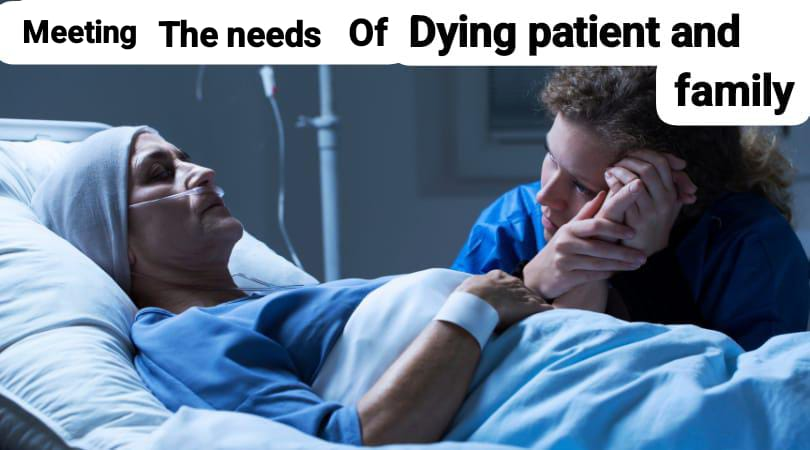
- Physiological need:
- Personal hygiene: Cleanliness of skin, hair, mouth, eyes and nose, regular bathing.
- Pain Control: Effective pain control medicines.
- Breathing: Keep the airway patent. Remove excessive mucus that has collected. Position the patient in an easy breathing posture. Regular suction, intermittent oxygen therapy.
- Nutrition: Encourage them to sip water or ice cubes. Provide IV fluids if necessary.
- Cleanliness:Frequent hand hygiene. Remove dentures. Apply emollients to dry skin.
- Elimination: The patient may have incontinence, constipation, and urinary retention. Diapers or bedpans can be used for patients with incontinence. Laxatives or enemas may be needed in cases of constipation. Catheterization may be needed for urinary retention. Change bed linen frequently. Change positions frequently and take back care to prevent pressure sores.
- Psychological needs:
- Self esteem:Provide care to the patient as a valued person with dignity. His feelings and emotions should be taken into account. The patient may have a fear of isolation, of facing death alone.
- Communication: Give the patient undivided attention. Speak in a normal tone and pitch. Avoid whispering to the patient. Encourage other family members to be present in the room.
- Spiritual needs: A terminally ill person may feel comfortable with religious support. In such cases, priests may extend their services. A dying patient may sometimes feel hope, relief from pain and suffering while facing death. But others may need help to feel hopeful.
- Needs of Family:
- Listen to family concerns and be a non-judgmental listener. Encourage family members to verbally express their fears and concerns. The number of visitors may need to be limited as it can exhaust the patient.
Autopsy
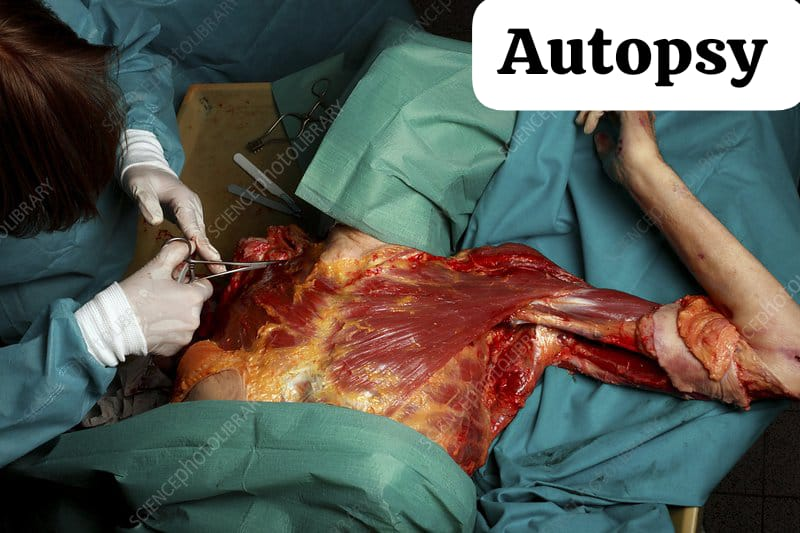
• Autopsy is a post-mortem examination.
• An autopsy is a highly specialized medical procedure in which a deceased body is examined to identify the cause of death, as well as the disease or injury.
• Autopsy is mainly performed in cases of suspicious, unexplained and sudden death.
• Autopsy is mainly performed in patients who have committed suicide, in cases of unknown dead bodies, in cases of unknown cause of death and in cases of homicidal death.
• In autopsy, both external and internal examination of the body is done. In which the body’s organs, tissues and fluids are examined.
• In which organ dissection, collection of body fluids for toxicology and tissue samples are taken.
• Before performing the autopsy, the relatives are consulted.
• After the autopsy, no organ or tissue of the body of the person who signed the consultation cannot be kept in the hospital without permission.
Write types of autopsy :

- 1) Clinical (Medical) autopsy
- 2) Forensic autopsy
- 1) Clinical (Medical) autopsy :
- Clinical Autopsy is mainly performed in hospitals to determine the disease or condition of a deceased patient.
- 2) Forensic autopsy:
- Forensic autopsy is performed in criminal and legal procedure cases. Its main goal is to determine the cause and manner of death. For example, it is known whether the death was natural, accidental, suicidal or homicidal.
Embalming
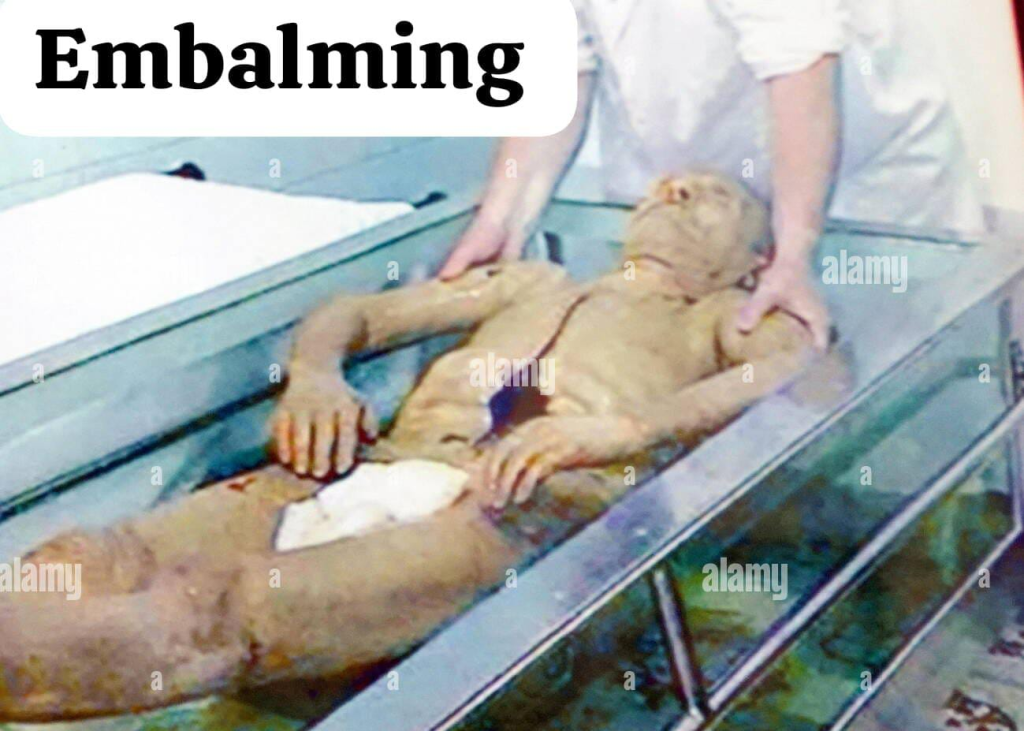
• The process of preserving a body after death is known as embalming. So that the decomposition seen in a dead body can be delayed.
• Embalming is a type of art and science that is associated with preserving a dead human body.
• The embalming process has been used for thousands of years. The Egyptians are famous for their mummification process.
Embalming chemical (एमेबेलिंग केमिकल)
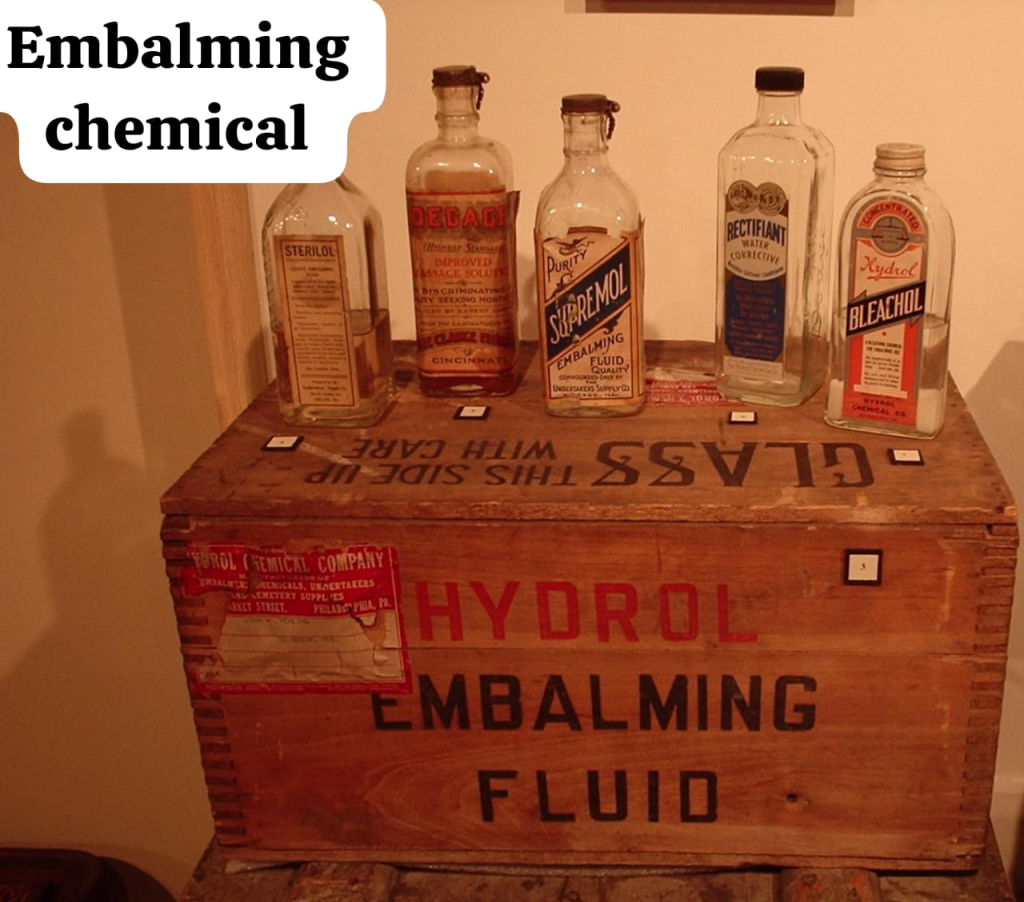
• Embalming chemicals are a type of substance used to preserve and disinfect a dead body.
• Embalming chemicals use various preservatives, sensitizers, disinfectants, and additives.
• These chemicals delay decomposition, prevent bacterial growth, and maintain the appearance of the body.
• Embalming chemicals include the following chemicals:
• Formaldehyde (primary preservative and disinfectant)
• Methanol
• Phenol
• Glycerin
• Dyes
• Humectant
• Anticoagulant
Write parts of embalming process (रित पार्ट एफ एमबेलिंग प्रोसेस)
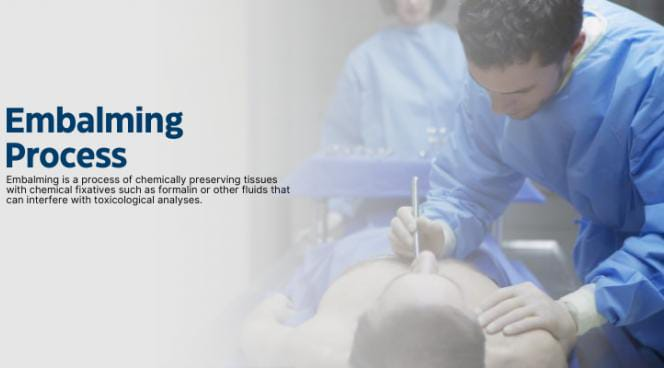
- 1) Arterial embalming
- In arterial embalming, the blood in the body is replaced with embalming fluid. In which the blood is drained through the right jugular vein and an embalming chemical is injected through the right common carotid artery.
- 2) Cavity embalming
- In cavity embalming, the internal fluid in the body cavity is aspirated with the help of an aspirator and trocar and embalming fluid is injected in its place.
- 3) Hypodermal embalming
- In hypodermal embalming, an embalming chemical is injected under the skin. Which provides additional preservation.
- 4) Surface embalming
- Surface embalming uses many other supplemental methods. Which are mainly useful for visible and injured body parts.